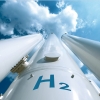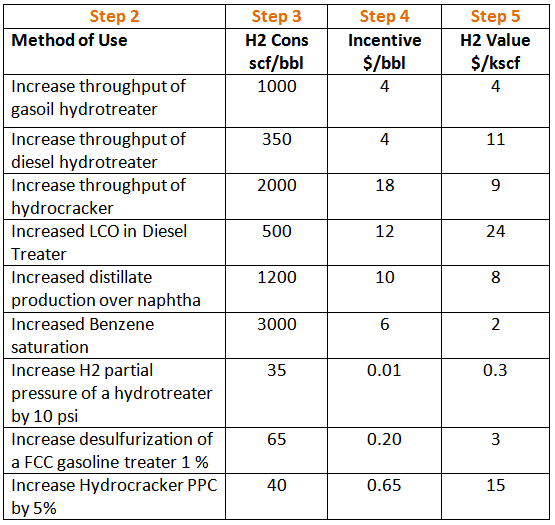RL Blogs

By Optimization Specialist Robert
May 07, 2019Hydrogen is one of the most valuable commodities at a refinery, but many do not know how to value it properly. |
||
| With stringent sulfur specifications on gasoline and diesel products, it’s rare to find a refinery today that has excess hydrogen available. Whether a refinery can produce its own hydrogen, or requires supply from a 3rd party facility, almost all modern refineries are hungry for more H2.
Since the value of hydrogen is rarely based on the cost of production, but more so the opportunity cost of consumption, understanding the alternative uses of Hydrogen at your refinery is critical. This not only enables more accurate LP modeling, but also allows one to communicate the fundamental drivers more clearly.
Relying on Linear Programs to provide guidance on hydrogen system optimization requires careful management of boundary conditions. There are many variables that must be positioned correctly to quantify the value:
Setting all of the parameters correctly once may not be too challenging of a feat, but maintaining all of these parameters correctly over time is close to impossible. At some point, a change in unit configuration, or more likely a change in planning analyst will skew the accuracy of LP results.
In that regard, it would be helpful for refiners to develop a good fundamental mental model of how to value hydrogen without using a LP. The following tips will teach you how to accomplish this.
Step 1: Define the Availability Constraint The first order of business is to understand if your refinery has excess Hydrogen availability or not.
In the rare scenario that your refinery has more H2 supply than demand, the value of hydrogen is simply the cost of hydrogen. For generic Steam Methane Reformer (SMR) production, hydrogen typically costs between $1.5 - $3.0 per thousand standard cubic feet (kscf). This will vary depending on the cost of natural gas.
For all other refiners who have hydrogen availability constraints, the value of hydrogen will be based on the opportunity cost of hydrogen use, which is a bit more challenging to understand.
Step 2: Define the Alternate Uses of Hydrogen For H2 constrained refineries, the only way to value Hydrogen is to compare the opportunity cost of the various uses of hydrogen. Understanding your refinery configuration and capabilities is a critical step to defining the alternate uses of hydrogen. Many people can define 2 or 3 items, but oftentimes miss more subtle, but higher margin opportunities. I’ll list a set of examples below to illustrate the point.
As you can see, complex refineries will have over a dozen alternative ways of consuming hydrogen. A well configured LP will correctly prioritize the uses of H2; however, most refinery LPs will not capture all of the opportunities. Building a mental model of the various paths is a good way to gut-check the LP results from time to time.
I will not discuss the details of each alternative above, but will do so in subsequent blogs to give each topic justice.
Step 3: Derive Hydrogen Consumption for Each Alternative To normalize all of the alternate uses of hydrogen for comparison, you’ll need to first determine the H2 consumption on a volumetric feed basis. As each of the alternatives above has different units of measure for H2 consumption, you will need to find a common factor.
As mentioned, I will not discuss the details of each alternative in this article. For argument sake, let’s just assume that the assumptions that I use are accurate. The table below shows the hydrogen consumption for barrel feed of each alternative.
Step 4: Establish a Value for Alternate Uses of Hydrogen Establishing a value for the use of hydrogen is often times the most difficult step because many people rely on the LP to provide the results. If you haven’t figured out by now, I rarely trust the results given to me by the LP because I do not often trust the people who are running the LP.
For convenience, let’s again assume that I have employed a trustworthy planner to determine economics for the various options that we have defined. This is captured below in the table.
Step 5: Normalize the value of H2 on a $/kscf basis Combining Step 3 and Step 4 together, one can then re-state the value of hydrogen on a normalized basis of volume consumed ($/kscf). After normalizing the values, you clearly develop a prioritized list of opportunities to set the refinery hydrogen strategy.
The table below shows a summary of all the steps above. Since the various alternatives all have different H2 consumption patterns and economic basis, establishing an equal comparison of options proves to be extremely useful. After all, this is just a visual way of representing what an LP compares in the background of its analysis.
With a prioritized table developed, refinery engineers and planning analysts can determine which options are available to pursue. Over time, this table can be updated to maintain visibility to the different Hydrogen uses available at a refinery.
To summarize the process above, the simple work-flow diagram presented below can guide your efforts.
| ||
|


.png)

.png)








